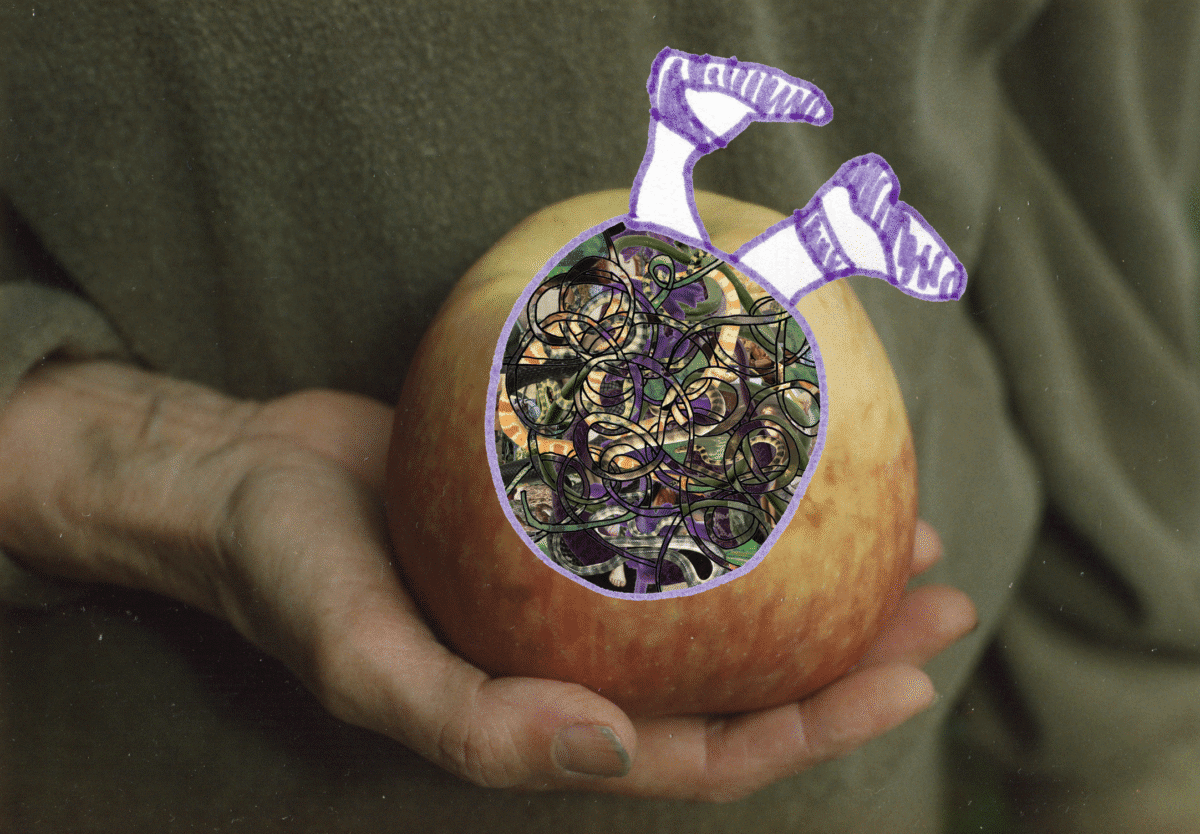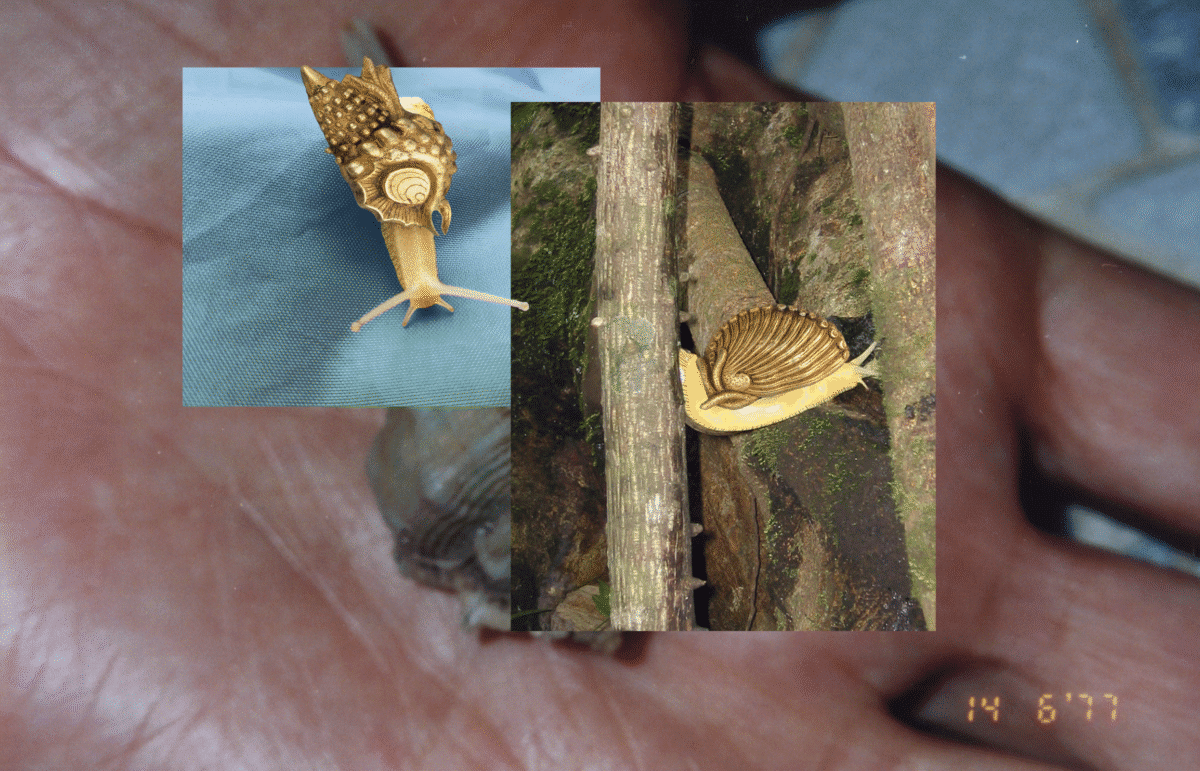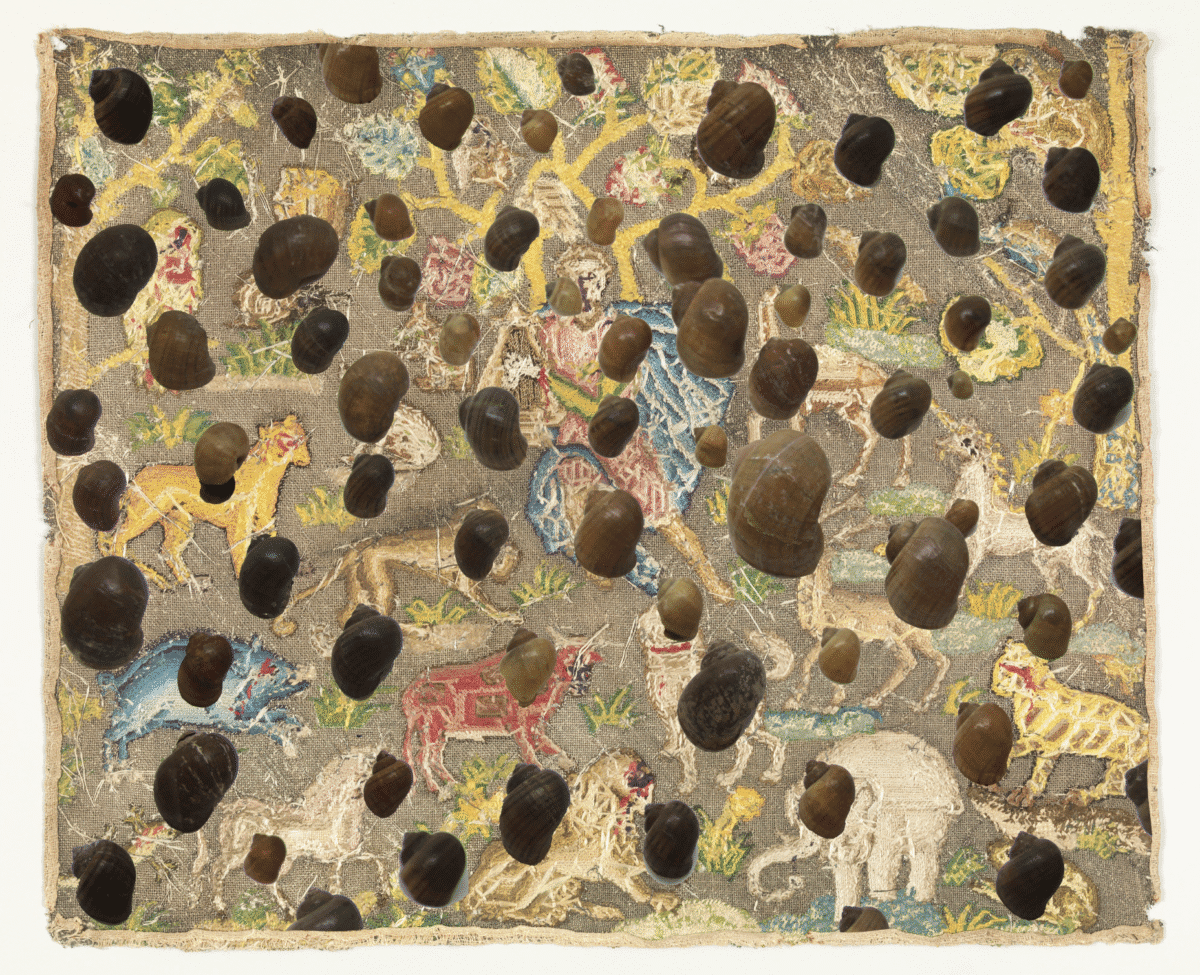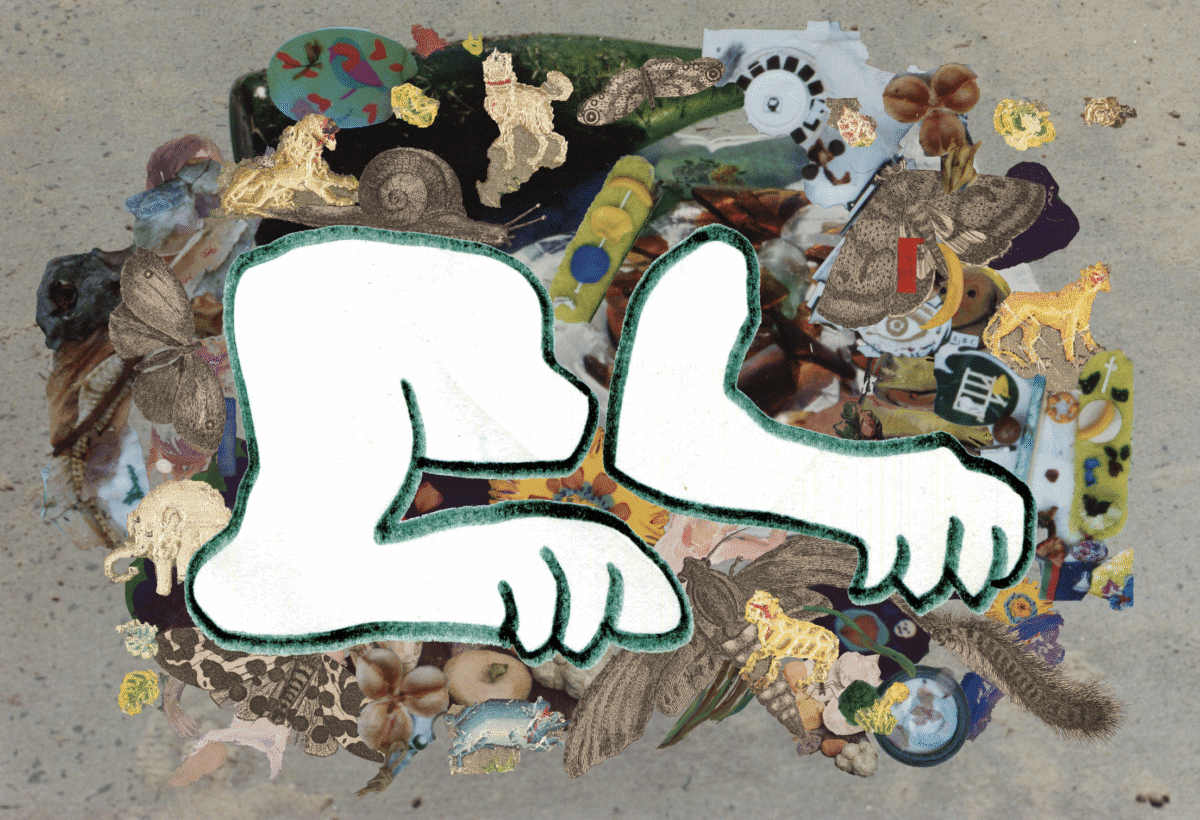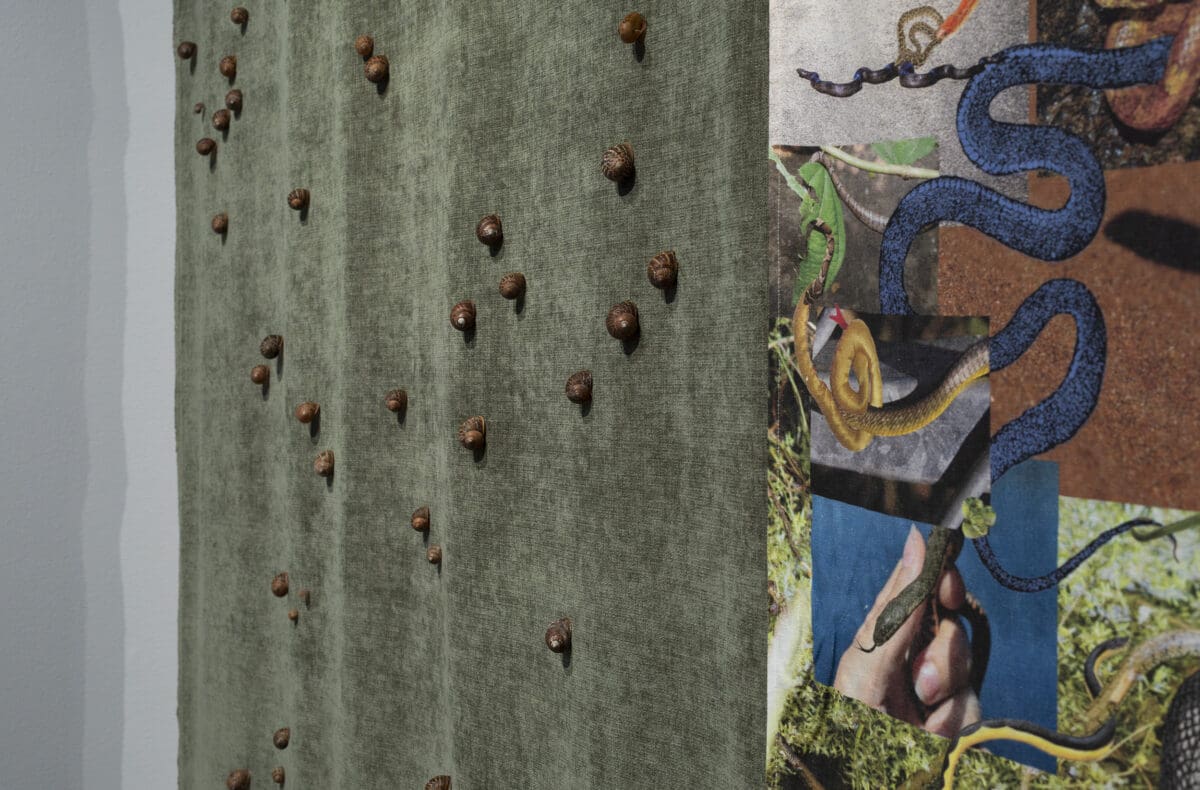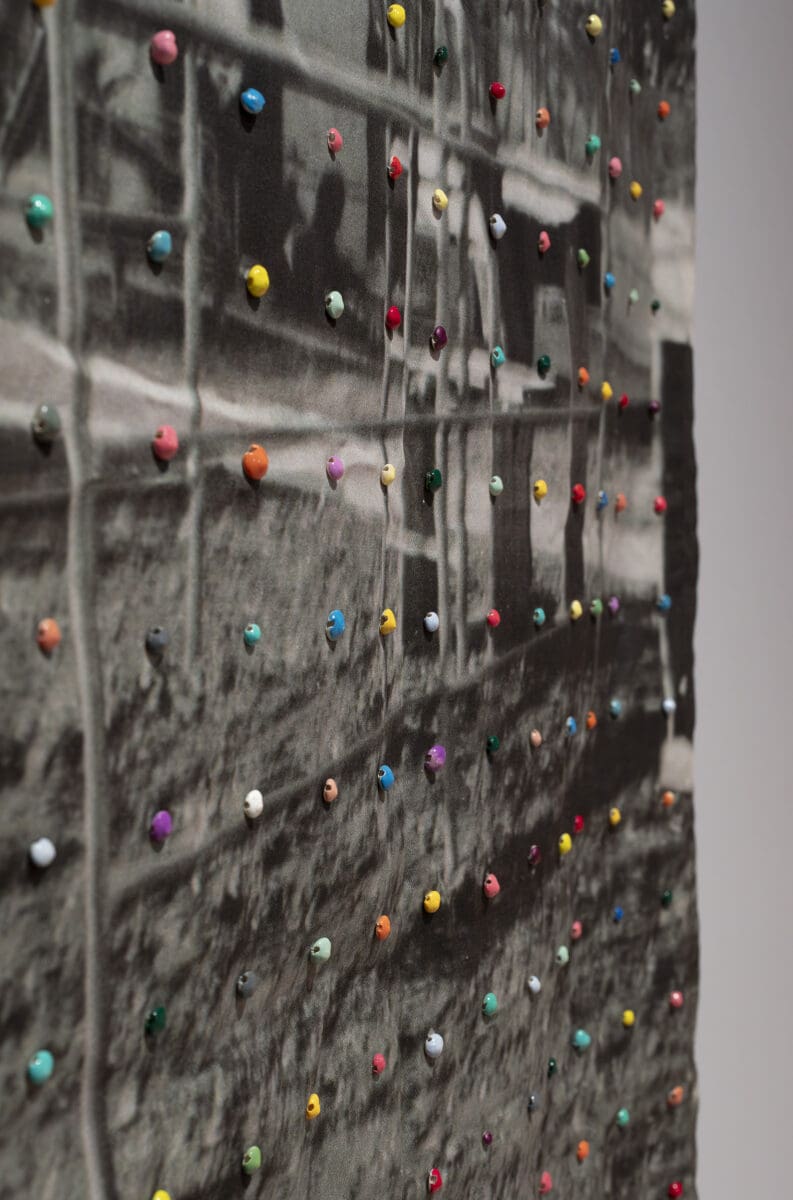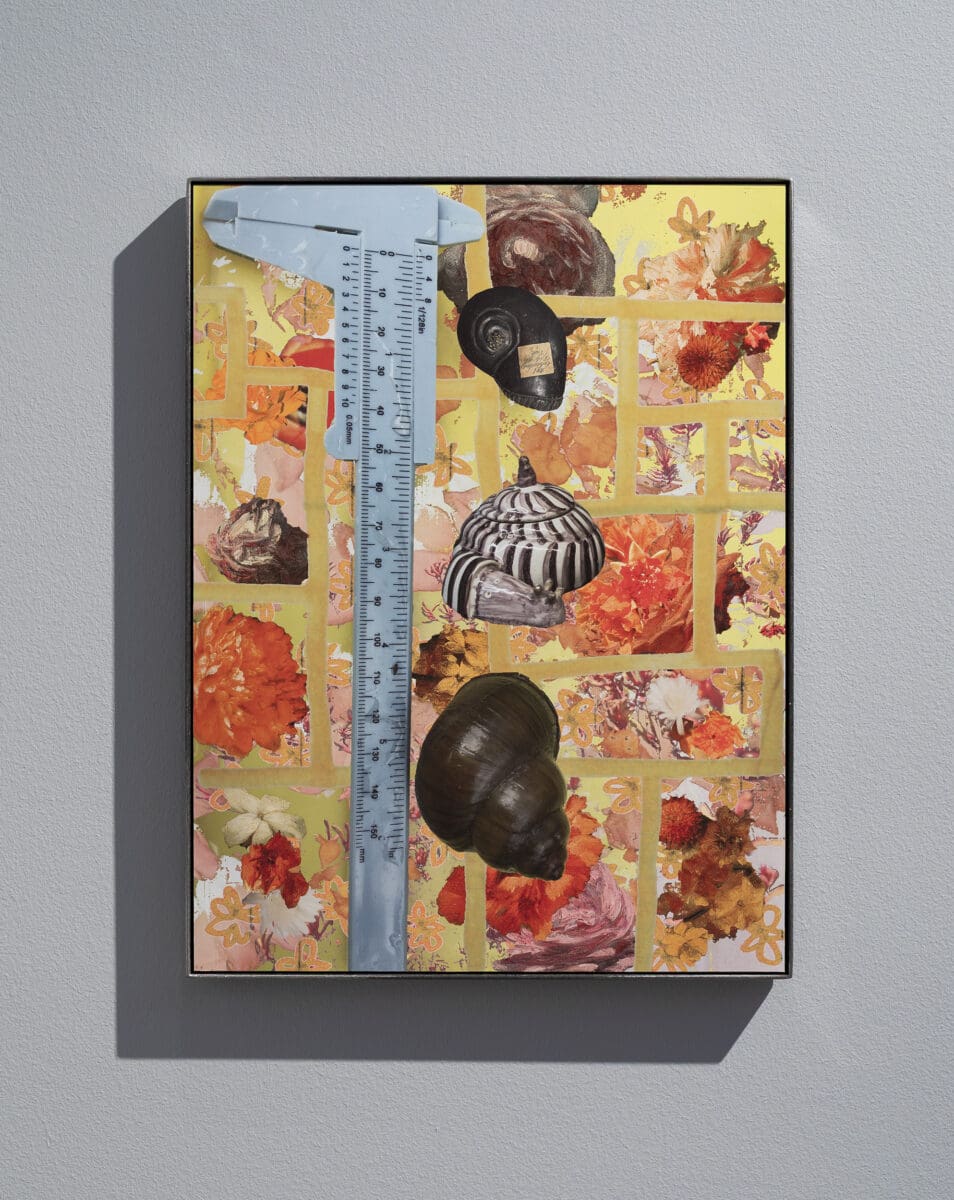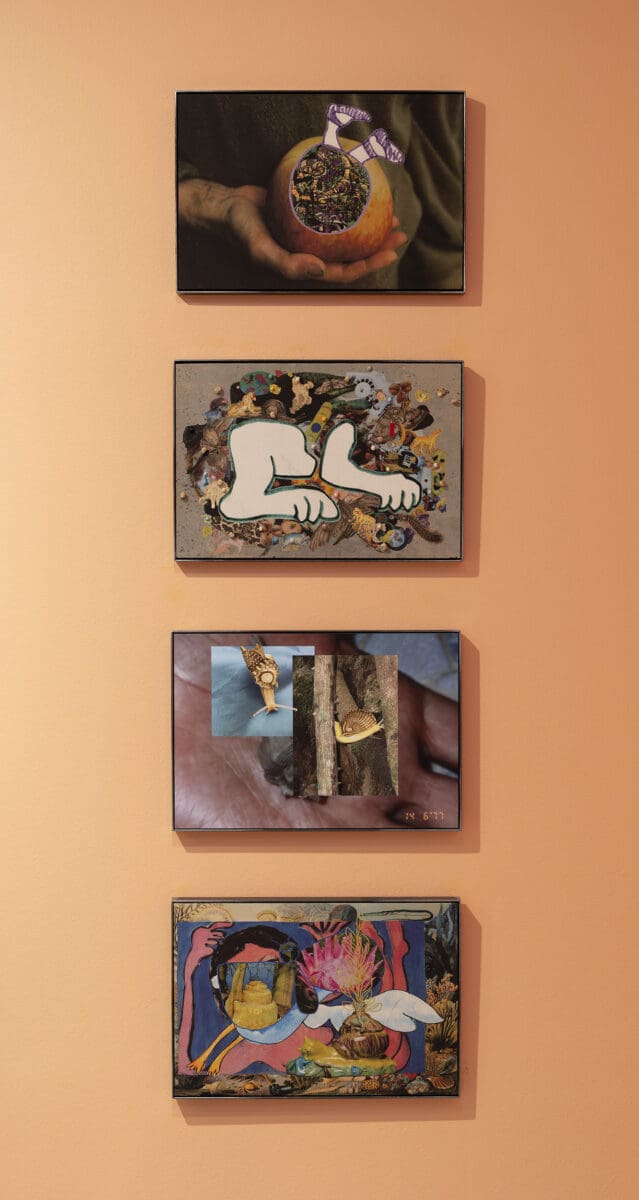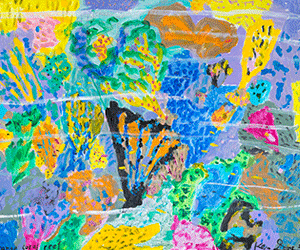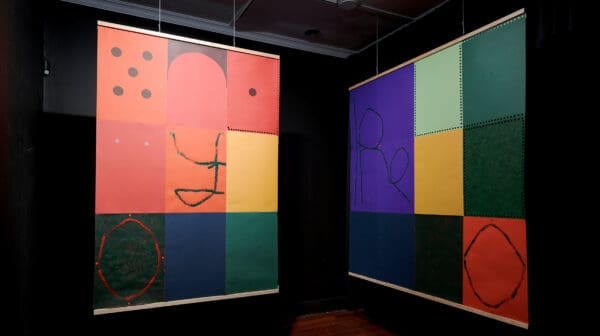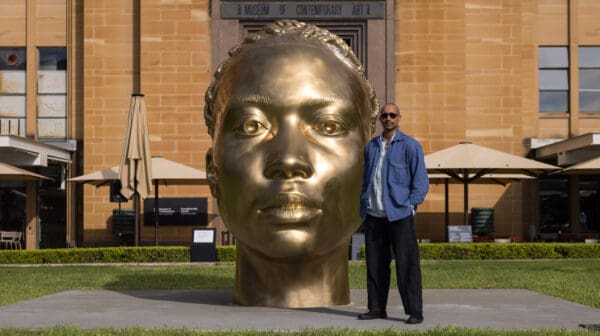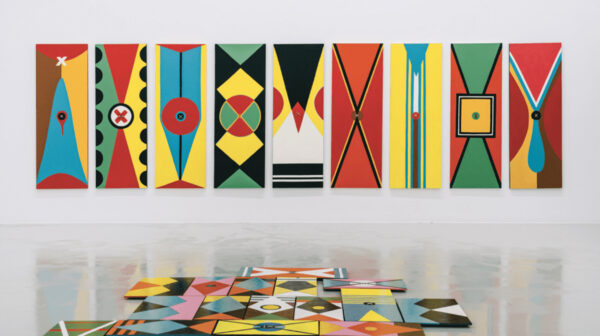Grace Wood’s new exhibition for Heide Museum of Modern Art, A Garden is a Mother, intertwines personal, familial, and artistic archives. Consisting of textile and digital collage, Wood traces lines of inheritance and influence to position the garden as a site of both personal and artistic cultivation.
When approaching the commission, a driving interest for Wood was the legacy of the modernist artists who contributed to Heide—most directly, the French-born Australian artist Mirka Mora, whose colourful paintings and sculptures were an enduring touchstone for Wood’s own grandmother. As the artist observes, “There’s this funny crossover with my late grandmother, who really liked Mirka Mora and took a lot of inspiration from her, and even copied some of her works in her doodles and sketches in her notepads.” Wood’s grandmother was a kindergarten teacher as well as a prolific and curious maker, and images of her artworks feature in the exhibition as material, alongside her analogue photographs of orchids, garden harvests and snakes (to name just a few).
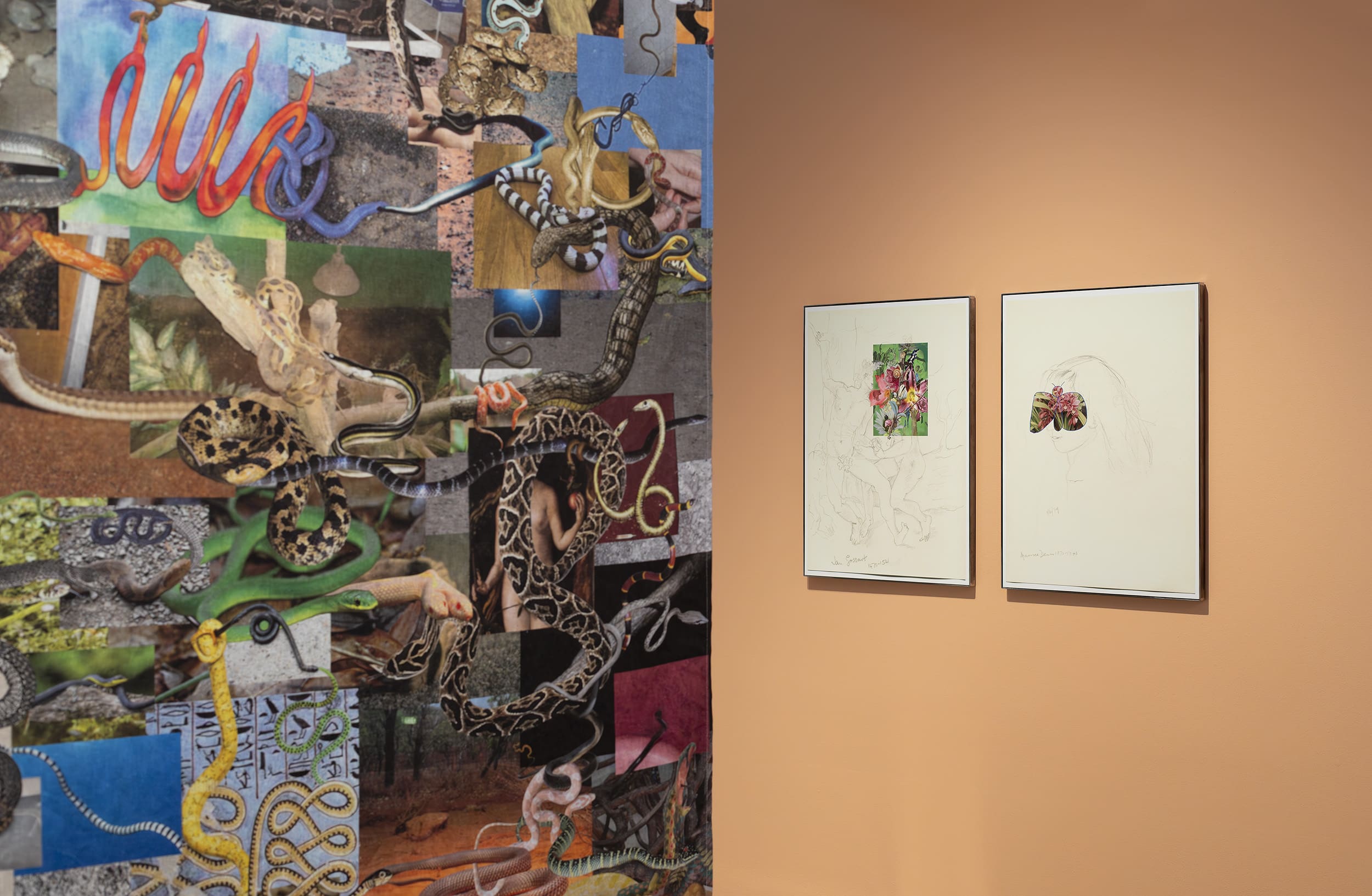
Despite drawing from highly personal archives, Wood is always attuned to the ethics of representation and her subject’s right to anonymity. Faces and defining features are abstracted under more images. For example, a drawing produced by her grandmother—itself a copy of drawing by Maurice Denis (1870—1943)—is overlaid with a simplified shape of a butterfly cut from a photograph of an orchid. In working with her grandmother’s archive, Wood adopted some of her Nana’s artistic strategies. Of this influence, Wood remarks: “She was very much about collecting things from nature, collages where she would stick feathers and bones and shells. I’ve never done that in my own practice until now. For one work I collected nasturtium seed pods from our garden. I was keeping them to plant, but I drilled little holes and made them into beads and sewed them onto the work.”
In the foreword to Sunday’s Garden (Melbourne University Press, 2012), Mirka Mora recalls, as a child, lifting the lid from a pan to free the snails her grandmother had collected with the intention of cooking. This small act of childhood insurgence and interspecies solidarity appealed to Wood, whose own child collected snails from the garden to keep and care for as pets. Wood recounts another synergy: “After my Nana passed away I was going through her jewellery and found this necklace made of all these little tiny snail shells. They’re not the same size as a garden snail, but I took that necklace apart and used all of those shells to make one of the works.” The shells adorn several artworks in the exhibition. In one, they are decorated with brightly coloured nail polish—applied by Grace and her daughter—and arranged in a modernist-style grid over a digital print of one of her grandmother’s photographs of a suburban backyard, featuring grass and children’s play equipment.
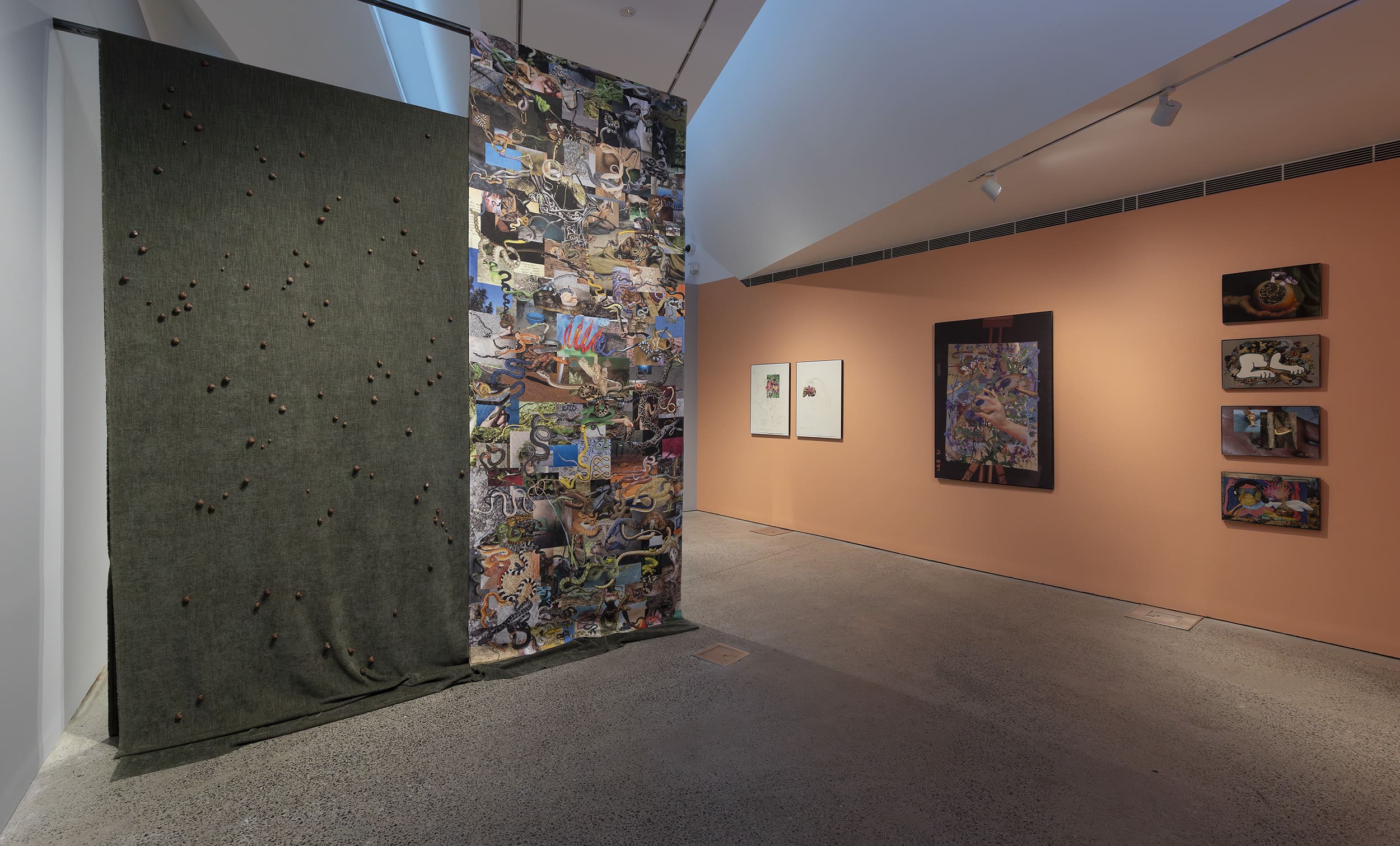
One work is so densely layered with photographs of snakes that it produces the effect of a writhing mass. The familiar symbol here is the Garden of Eden, but the imagery is equally shaped by deeply personal references. Wood lists the python that lived in the roof of her childhood home in northern New South Wales; the ‘Beware of Snakes’ signs dotted around the grounds of Heide; photographs of snakes in her grandmother’s garden; and a Mirka Mora drawing of a snake with a head at each end. Wood describes being transfixed by the latter: “I wondered if Mirka had seen a two-headed snake at Heide, and then started collecting images of snakes. I got obsessed with whether Mirka’s snake was real or imagined.” Wood’s drive to find the source of Mirka’s snake led to the proliferation of snake photographs in her own work. She describes this as a familiar way of working—beginning with an abundance of images, then gradually paring her collages back to only what is essential.
When I spend time with A Garden is a Mother, I think about the conflation of different kinds of creative life. This includes the devoted gardening of Sunday Reed; a child’s tender care for garden snails; a grandmother’s keen observance of life from behind the camera; and an artist’s attunement to all these factors. Through Wood’s careful constellation of references, she reimagines the garden as a space of unruly growth, creative instinct and generative possibility.
A Garden is a Mother
Grace Wood
Heide Museum of Modern Art
Until 15 November 2025




